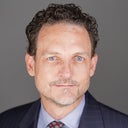I am three months post-op from anchor lift/implants. I had a negative mammogram one month prior to surgery. I now have two areas of probable fat necrosis per ultrasound, one is 7 mm and the other is 2 cm. Breasts came out great and the lumps are not visible, but I can feel them and I am concerned that these two areas will not resolve on their own without intervention. Is this common? Will it likely resolve? Is there anything that can be done other than excision? I also read about these causing an inflammatory process. Thanks so much.
Answers (18)
From board-certified doctors and trusted medical professionals





